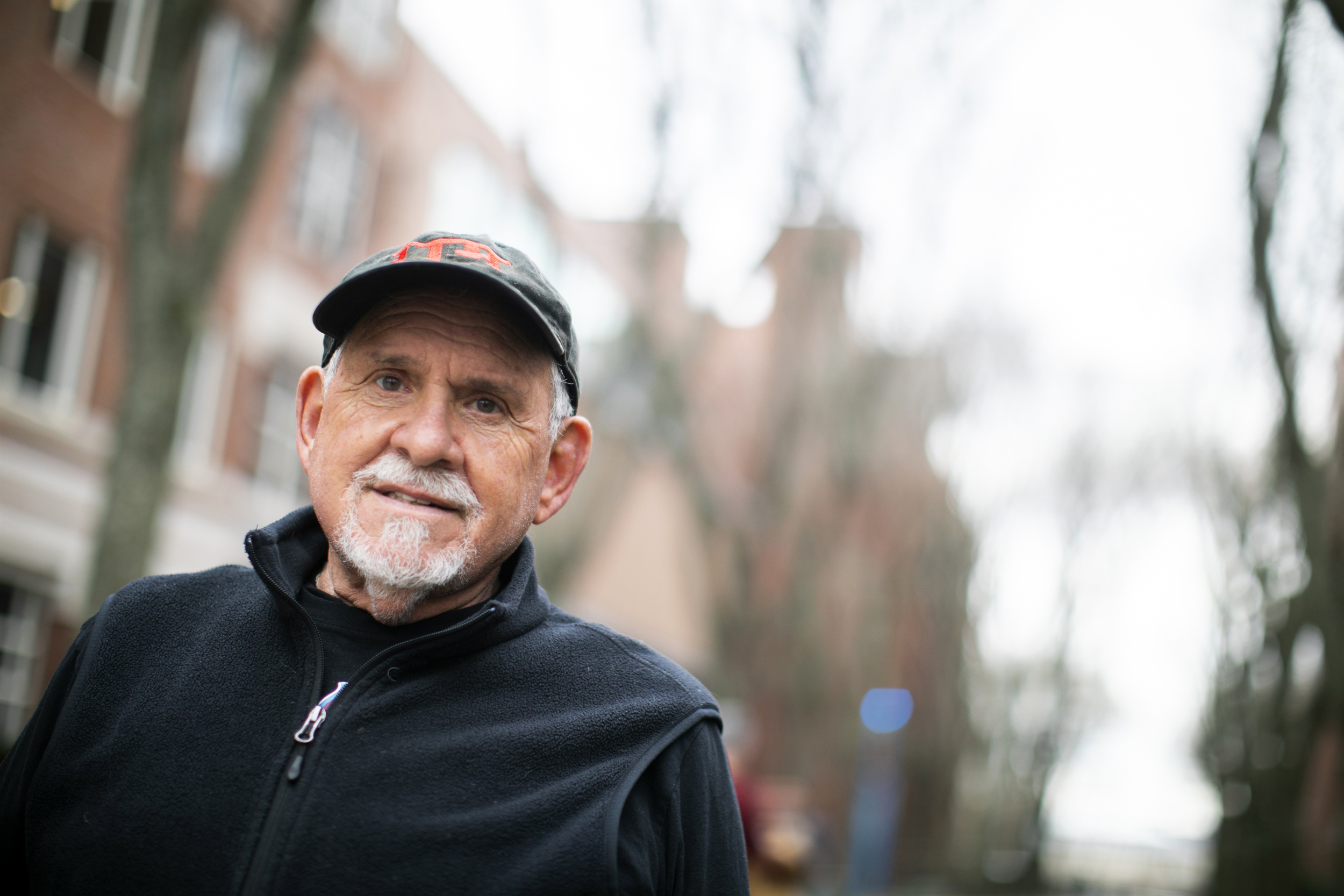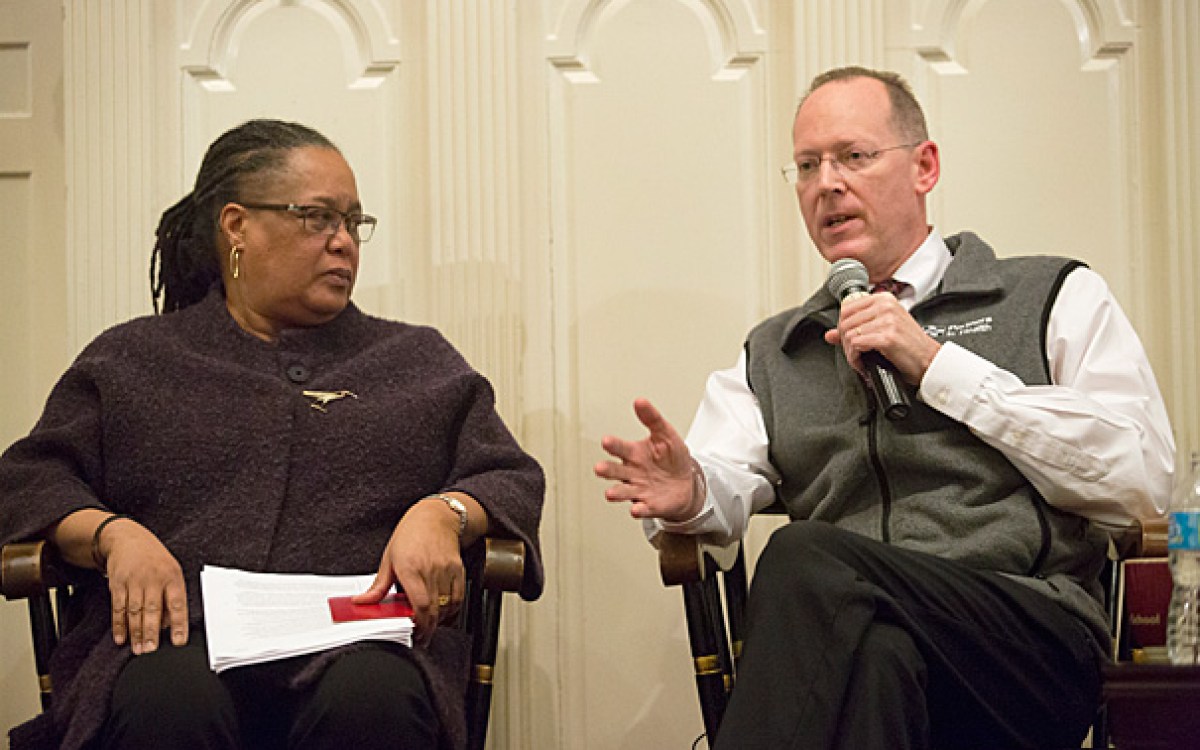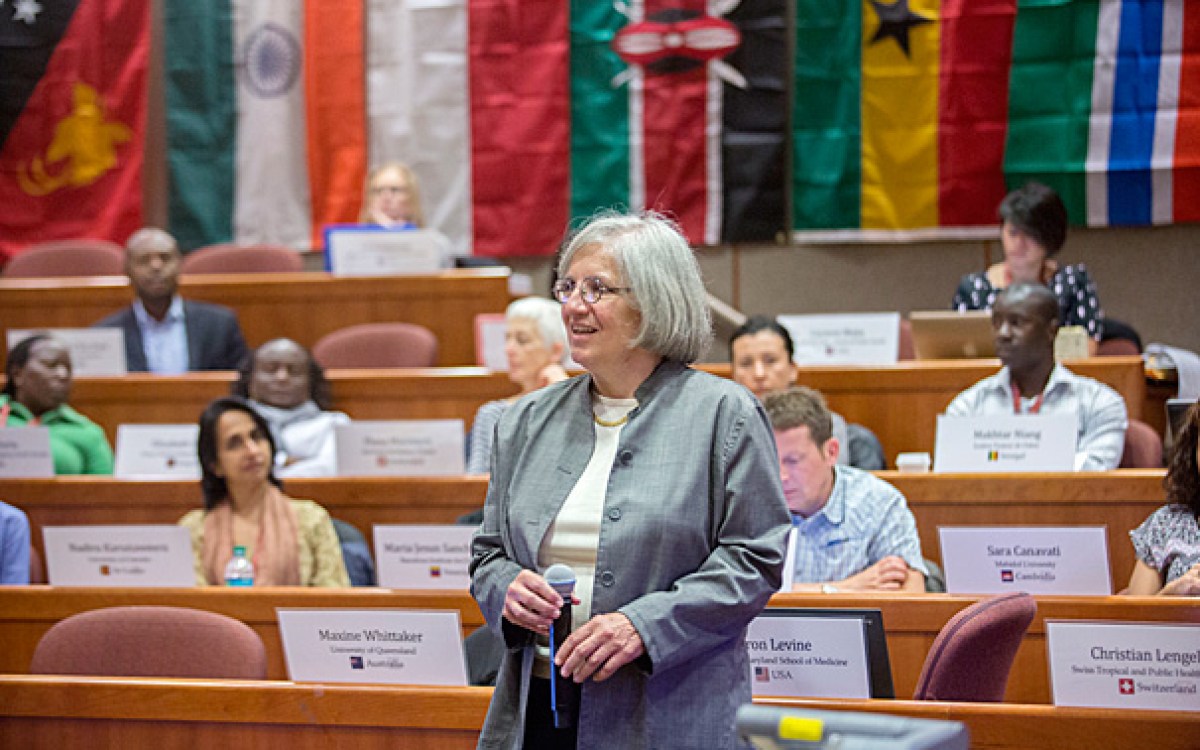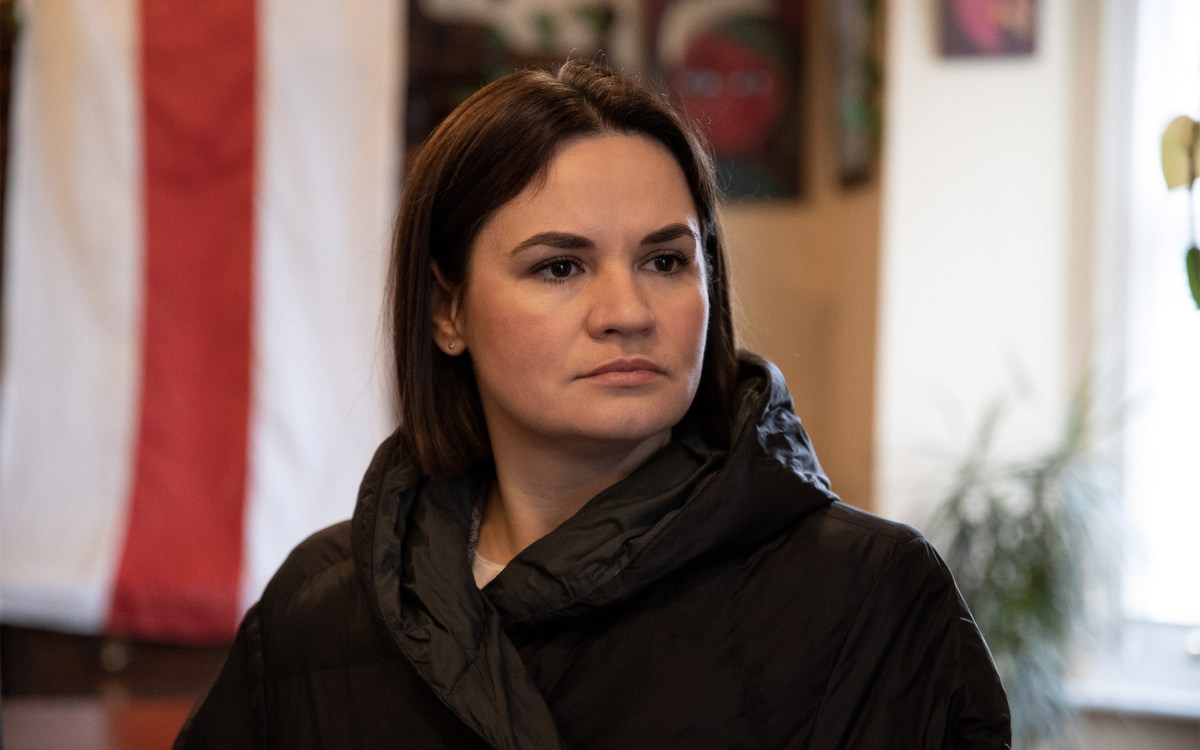
“It’s inevitable that the virus will continue. But that doesn’t mean forever messing up the whole world, it just means the virus is still here, like tuberculosis is still here,” says physician and epidemiologist Larry Brilliant.
Stephanie Mitchell/Harvard Staff Photographer
Speaking from experience on what makes a global killer
Larry Brilliant, doctor who helped vanquish smallpox, assesses COVID response and warns of rising threats, including lack of trust
In 1970s India, the physician and epidemiologist Larry Brilliant played an important role in efforts that eradicated smallpox caused by the deadliest form of the virus, variola major. Since then, he has continued his public health career, founding a nonprofit to fight blindness, working as a faculty member at the University of Michigan, heading Google’s nonprofit arm, and promoting public health and social justice at every stop.
Brilliant was on campus this week to deliver the Weatherhead Center’s Samuel L. and Elizabeth Jodidi Lecture at Memorial Church. He sat down with the Gazette to talk about smallpox and the COVID-19 pandemic. The interview has been edited for clarity and length.
Q&A
Larry Brilliant
GAZETTE: Were there lessons from smallpox that we didn’t learn with COVID?
BRILLIANT: Yes. The first lesson is that we live in a cause-and-effect world. Truth matters and communicating that truth in as transparent and honest a way as you possibly can matters. And involving the community of people who are affected and listening to them — as Paul Farmer talks about in all of his books — matters. You had a president of the United States who lied about hydroxychloroquine and putting light inside the body and wanted to not disclose the number of cases. You had a premier in China — or a local administration; we don’t know — who hid the origin of the disease, who very quickly sanitized the fish market without letting anyone look and find any cases, who forbade Chinese scholars from publishing anything about the origins of COVID and penalized those who did.
You also had a great thing. Operation Warp Speed — with all of its flaws — was phenomenal. The first vaccine worked really well, but the virus has gone through hundreds of thousands of mutations and the vaccine hasn’t. We can’t keep up because you’ve got to get the variant before you can make the vaccine against it, so the variant is always going to be a step ahead of the vaccine. It’s inevitable that the virus will continue. But that doesn’t mean forever messing up the whole world, it just means the virus is still here, like tuberculosis is still here.
GAZETTE: There are some coronaviruses that cause the common cold. Is it possible that those original viruses looked like this when they first appeared?
BRILLIANT: It’s very likely that there were four pandemics of coronaviruses in history, and that they did to the then-current civilizations what COVID has done to ours. Then, after four or five years, the virus can’t find sufficient people to infect in the way that it did before, attenuating its disease course. It doesn’t provoke the same public response — masking and social distancing and vaccinating — so it’s able to propagate itself at a much lower rate. We call that “the way the coronavirus retires,” and it retires into the coronavirus retirement home, which is, it becomes a cold. Of the nine or 10 viruses that give you seasonal colds, four are coronaviruses.
GAZETTE: You’ve prominently supported increased early detection and response. How would you rate us on that with this pandemic?
BRILLIANT: The science has been fantastic. We have learned a lot about at home testing. I’m not a big fan of antigen tests, but Lucira, which looks like an antigen test, costs 25 bucks and with scale, it will cost $5. That’s a molecular test as good as a PCR. Being able to do those at home means we now have a path laid out for us to have home testing for norovirus, for SARS, for AIDS, for pregnancy — and that’s going to make us a healthier world.
GAZETTE: What are the chances of another pandemic?
BRILLIANT: What Farmer quoted me as saying — which I hope I did say — is that “outbreaks are inevitable, pandemics are optional.” If we find every case after it jumps from an animal to a human and we respond with containment, isolation, and quarantine, then there’s not going to be a pandemic. So, if we can have early detection systems all over the world, and sequencing so we know what the virus is, then the risk of a virus jumping and becoming a pandemic is low, almost zero.
GAZETTE: So, you can quash an outbreak if you respond properly?
BRILLIANT: If you know which ones can become a global pandemic. Ebola cannot create a pandemic that’ll bring the world to its knees.
GAZETTE: Because it’s too deadly?
BRILLIANT: Because it’s too deadly, because it’s blood-borne, therefore it’s hard to get. Also because of its incubation period, which is two to three weeks. HIV/AIDS has created a pandemic that killed a quarter of a million people. It’s a horrible disease and we’ve been horrible in our response — political hatred of gays and misunderstanding what contributed to it — but it can’t create a pandemic that brings the world to its knees because it’s got a six-month incubation period and because it’s blood-borne. Same thing with Lassa fever and Marburg. Same thing with cholera and tuberculosis — so long as we continue to have either vaccines or antibiotics. If we lose our antibiotics because of antibiotic resistance and if the vaccines no longer work, then plague and tuberculosis and cholera can come back and really hit us. But, as it is right now, with current vaccine and medical technology, they can’t create a pandemic that brings the world to its knees. So what can? It has to have a short incubation period. It has to spread respiratorily. It has to have asymptomatic spread.
GAZETTE: And that asymptomatic spread was a key with COVID?
BRILLIANT: Coronaviruses and influenza viruses are the only ones that we are currently worried about. There is another one called an arenavirus that starts off as a blood-borne disease. It enters the lung, and then acts just like a respiratory disease. So far, that’s never affected more than one family. But H5N1, if it ever gets airborne …
GAZETTE: That’s bird flu, right?
BRILLIANT: Yes. It’s got a 60 percent death rate. I would say we should put our attention on those diseases. Not that we should forget about HIV/AIDS, Ebola — we have to intensively work on those — but the part of our consciousness looking for pandemics that could bring the world to its knees should rationally be focused on those which have in the past and can in the future. That’s why I would give us such a poor grade on COVID-19. Because China and the United States, both for political reasons, responded poorly and late and disingenuously.
GAZETTE: What do you do if you have a good early detection system, all the policies in place for a good public health response, but the political side doesn’t pay any attention or pays perhaps the wrong kind of attention?
BRILLIANT: You have to build back trust. There was a time in the 1930s and 1940s when the only person in government who could arrest a governor and put them in jail was the commissioner of health. I don’t know if it was in every state, but I know it was in Michigan. Governors have gotten crazy, become alcoholics, had infectious diseases, but you can’t arrest the governor while they’re serving. The exception was that the secretary of health could arrest the governor if they were a clear and present danger to the state’s health. You have to ask yourself what kind of trust did we have in public health to allow us to do that? People who were alive in 1950-55, 1960, remember all these children getting polio, a waterborne disease, in August when it was hot and people congregated in swimming pools. I know my mother wouldn’t let me go swimming in August. I know that mothers were terrified during that period of the year because they’d seen pictures of kids in iron lungs. When first Salk and then Sabin, and Tommy Francis at the University of Michigan, proved that the polio vaccine worked, it was on the front page in every newspaper in the United States. In that moment, the whole country trusted public health.







